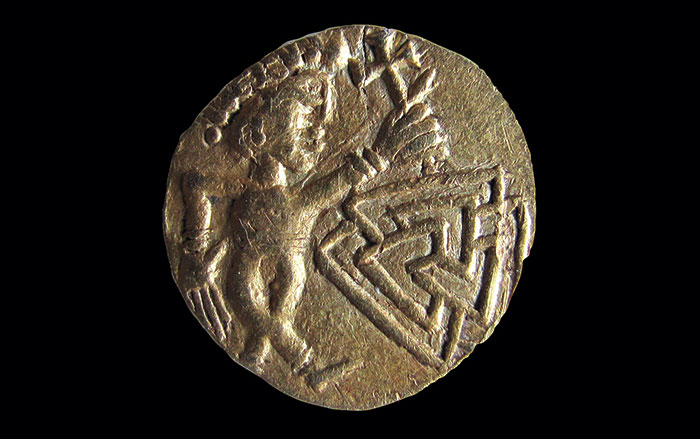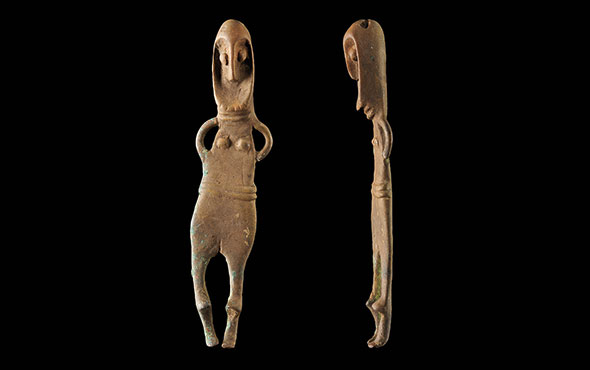
LIVERPOOL, ENGLAND—BBC News reports that an 8,200-year-old human footprint has been identified among hundreds of animal footprints in tidal mud flats on the coast of northwest England. Alison Burns of the University of Manchester said that the oldest prints among the 31 footprint beds on the beach are almost 9,000 years old, while the youngest are about 1,000 years old, based upon radiocarbon dating of seeds recovered from the different layers. Jamie Woodward of the University of Manchester said that many different animals, such as aurochs, red deer, roe, wolves, and lynx lived in the landscape until about 5,500 years ago, when many human and dog footprints appeared. This change reflects the rise in sea levels and the arrival of agriculture, he explained. The 8,200-year-old human print is thought to belong to a young man, based upon its size and shape. A protrusion on the little toe indicates that he had a bunion, Burns added. To read about nearly one-million-year-old hominin footprints discovered on the English coast, go to "England's Oldest Footprints."











